Hue and Hoi An
Many who visit Vietnam tend to spend most of their time either in the North (Hanoi, Halong Bay and Sapa) or the South (Saigon, Nha Trang and the Mekong Delta). But some of the most beautiful cultural and relaxing experiences are to be had in the centre - to the north and south of Da Nang - at Hue and Hoi An. Taking the scenic route from from Da Nang to Hue is worth it if only for the prospect of sipping coffee by the Tam Giang Cauhai lagoon.
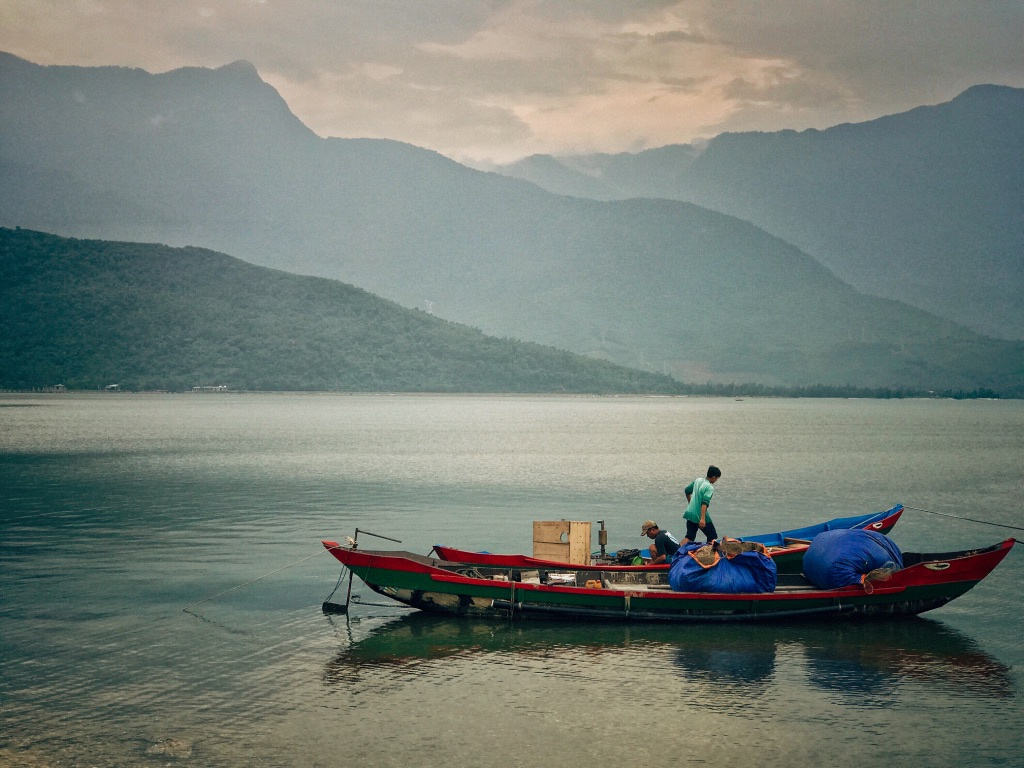

Fishermen, Tam Giang Cauhai lagoon
Hue, the old imperial capital of Vietnam is only some 50 km north of Da Nang (famous for the US airbase here during the Vietnam War). Itself the scene of some of the worst carnage in the war (remember the Tet offensive of 1968), Hue resembles nothing so much today as a peaceful little town that offers satisfaction to both the earnest and casual tourist. It is home to some fabulous hotels, restaurants, structures and handicrafts that will suit every budget and taste. Most famous among the hotels is the Saigon Morin Hotel which, with its classic old world charm and understated elegance, played host to Charles Chaplin and Paulette Goddard when they honeymooned here after a quick wedding in Shanghai. Situated by the Perfume River, it is the perfect place to be situated to enjoy the strand, access the citadel and sally forth into the maze of lanes that house some of the best restaurants to be had anywhere in Vietnam. The best among these is undoubtedly Le Jardins de la Carambole for both French and traditional Vietnamese: the Bun Bo Hue is not to be missed.
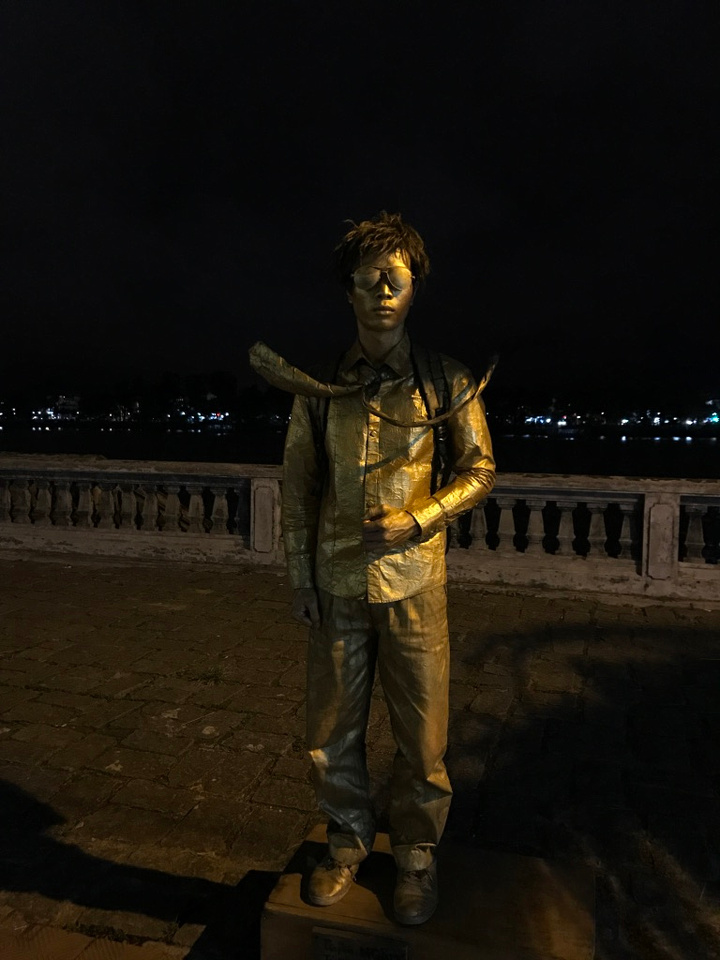

Living statue, Perfume River Walk
But the icing on the cake has to be the citadel, the tombs and monasteries, and the local art for which Hue is quite famous. The citadel is a grand fortification whose construction began in 1804. Within the citadel lies the Imperial City (not unlike the Forbidden City in China), that houses imposing gates, palaces, temples, gardens and pavilions.
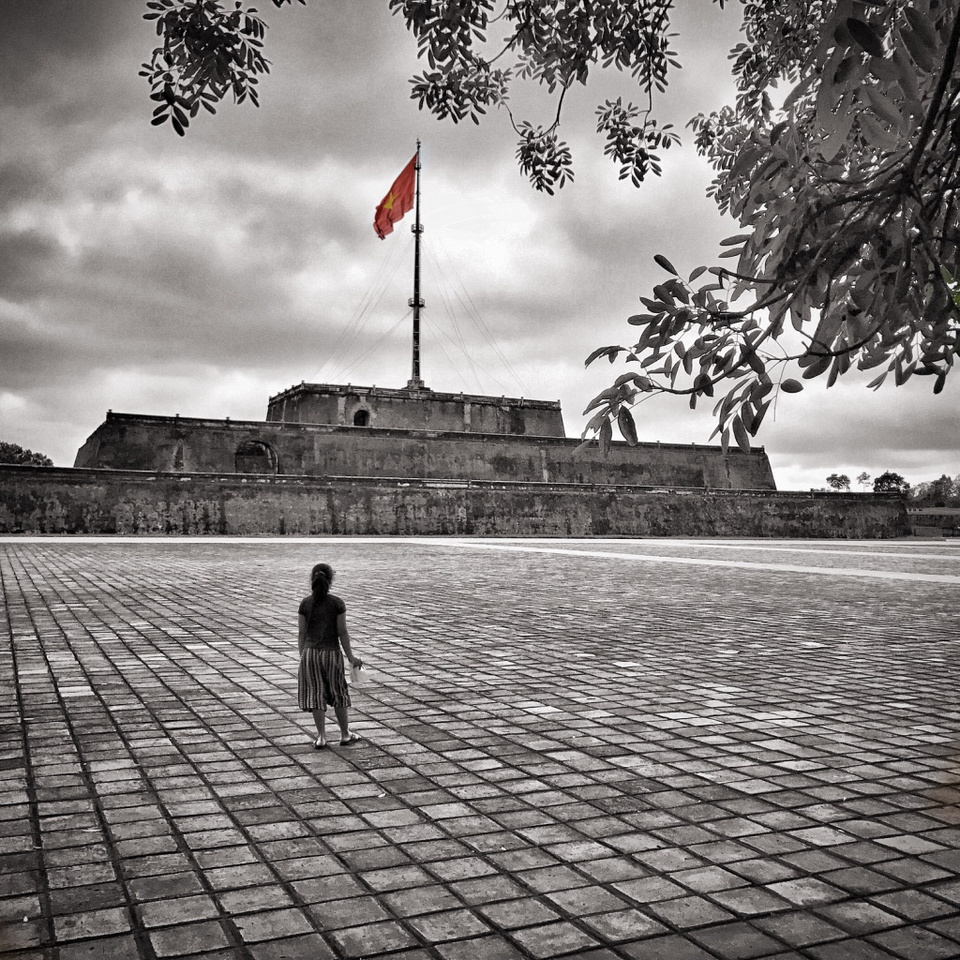
 A different era, a different flag
A different era, a different flag
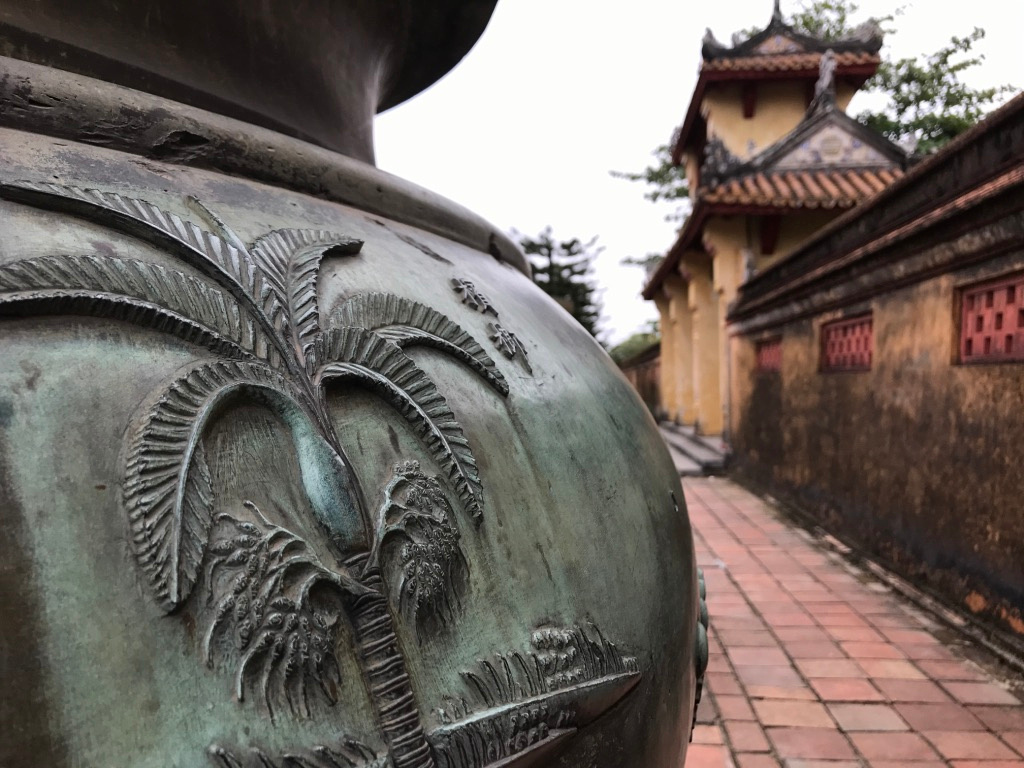
 Giant dynastic urns to commemorate less grand (often short) lives
Giant dynastic urns to commemorate less grand (often short) lives
And then there's the Perfume River. Emitting a somewhat nauseating scent (perhaps the putrefying relic of bygone days), a short boat ride brings you to The Pagoda of the Celestial Lady that affords some superb views of the river and the southern bank. It was also from this pagoda that the monk Quang Duc set forth in his Austin for Saigon and set himself ablaze in 1963 in protest against the government of Ngo Dinh Diem. His blue Austin has been returned and will, to the best of my knowledge, be parked here for all eternity.
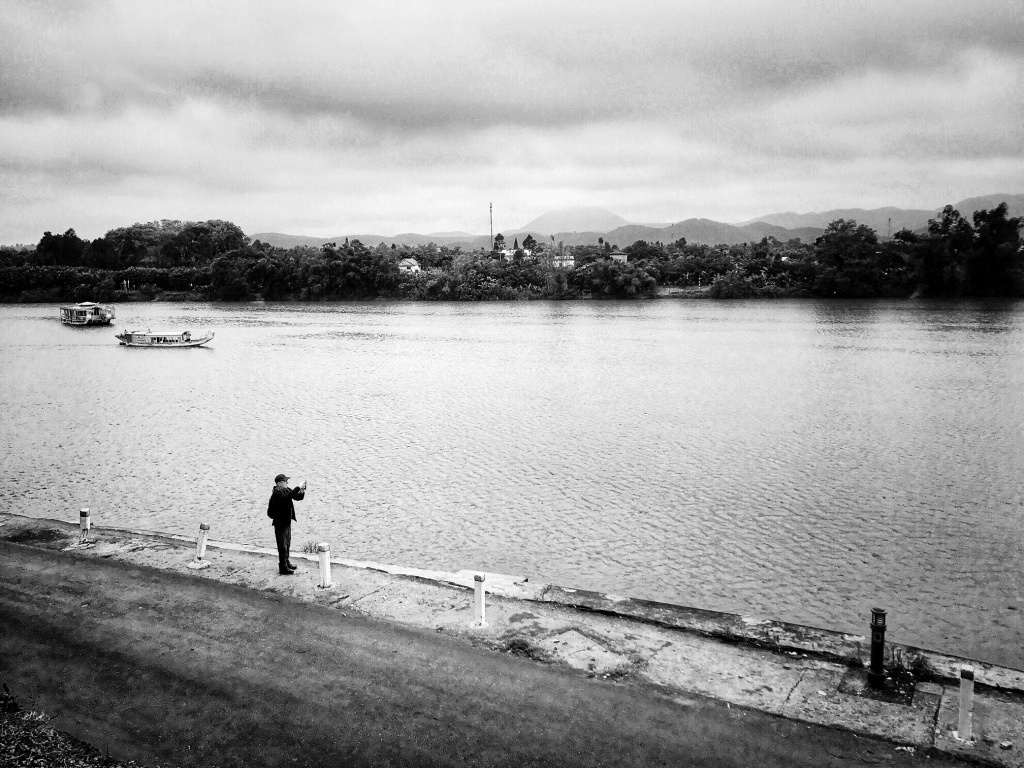

Tourist on the north bank
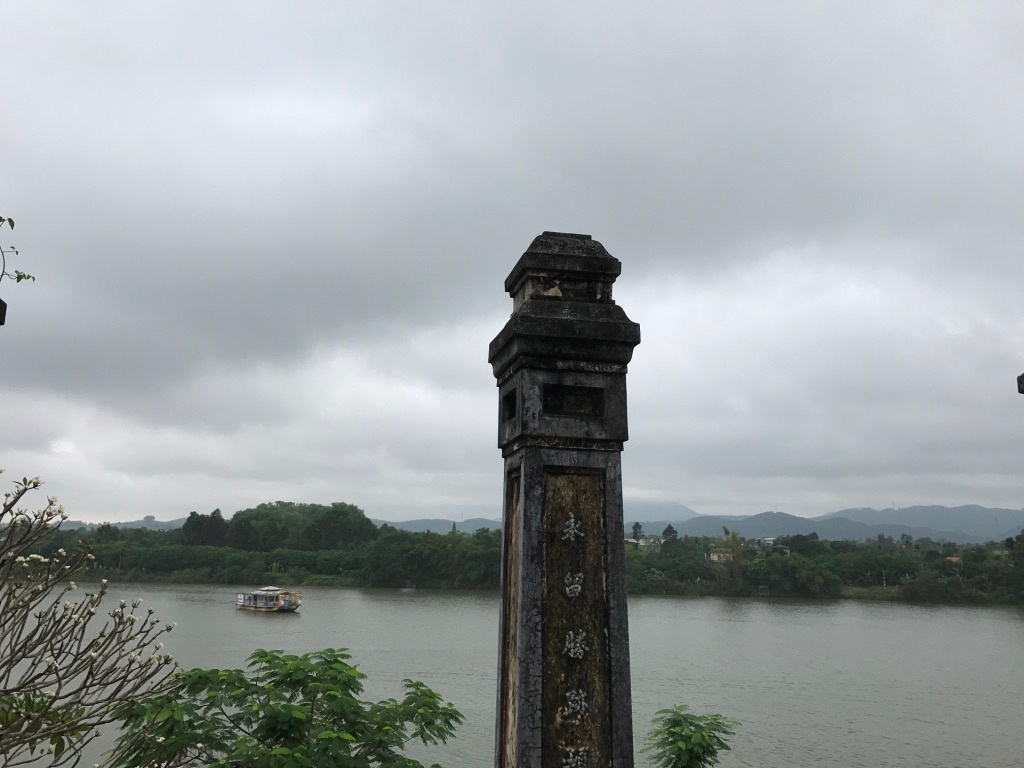

View of the Perfume River and the south bank
And then there are the tombs - well mostly mausoleum complexes - that lie strewn in a somewhat broken line along the north bank of the river. Each as imposing as the next, my favourites were the tombs of the emperors Tu Duc and Khai Dinh, the former for its sheer scale and splendour, the latter for its location and prospect.
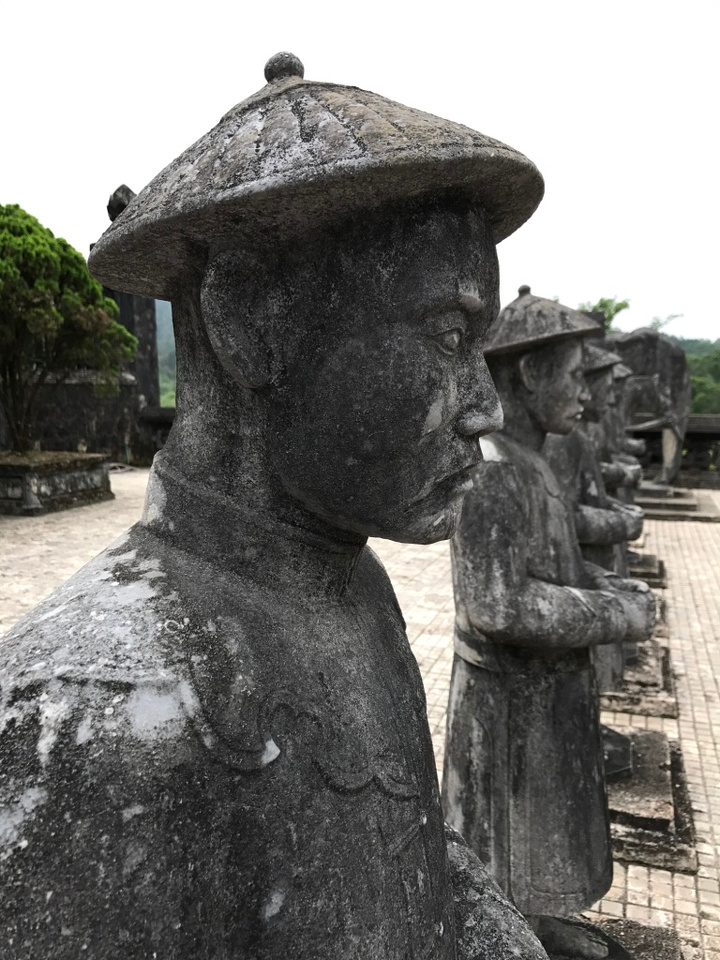

Mandarins guarding the ghost of Khai Dinh
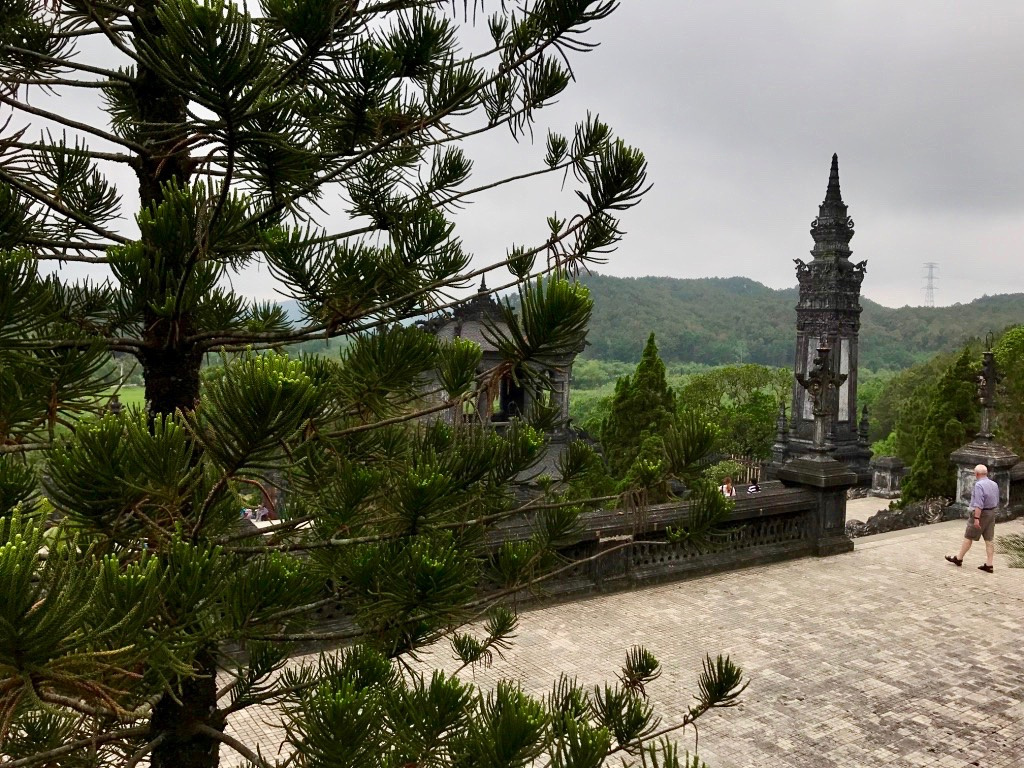

The hills beyond Khai Dinh
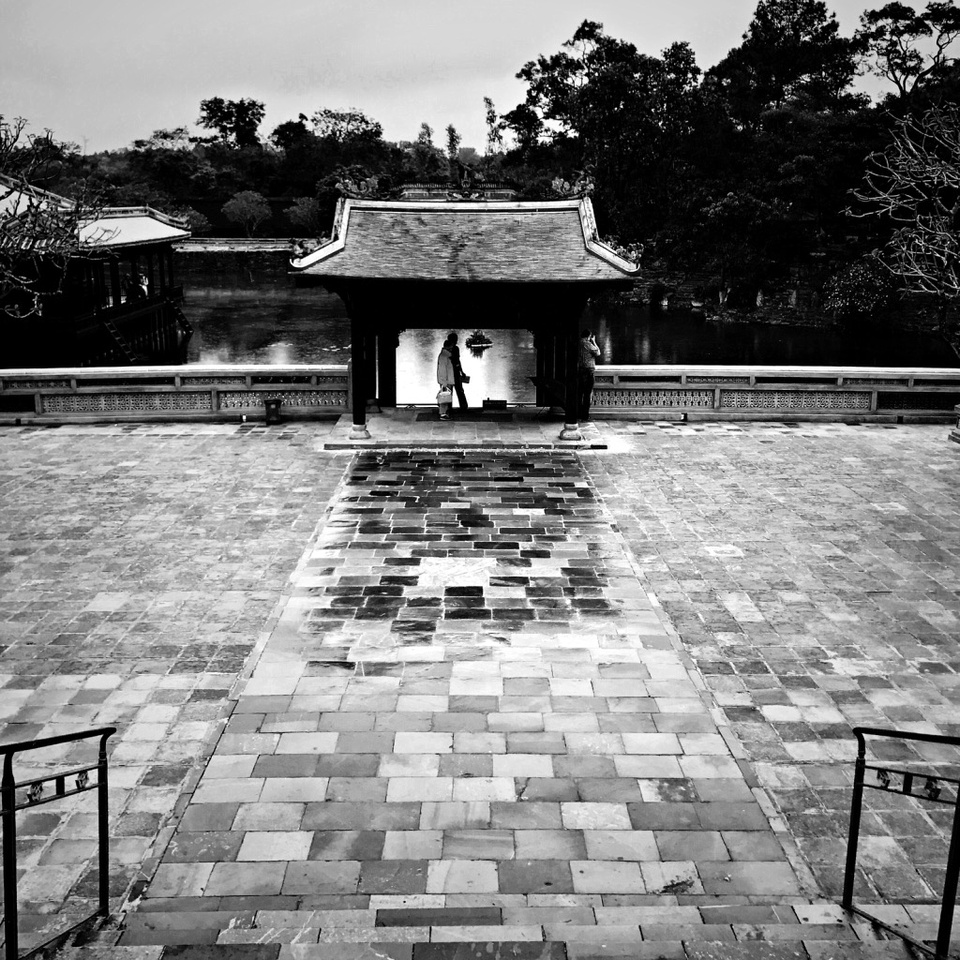

Tu Duc's lavish mausoleum complex allows you to take shelter from the rain ...
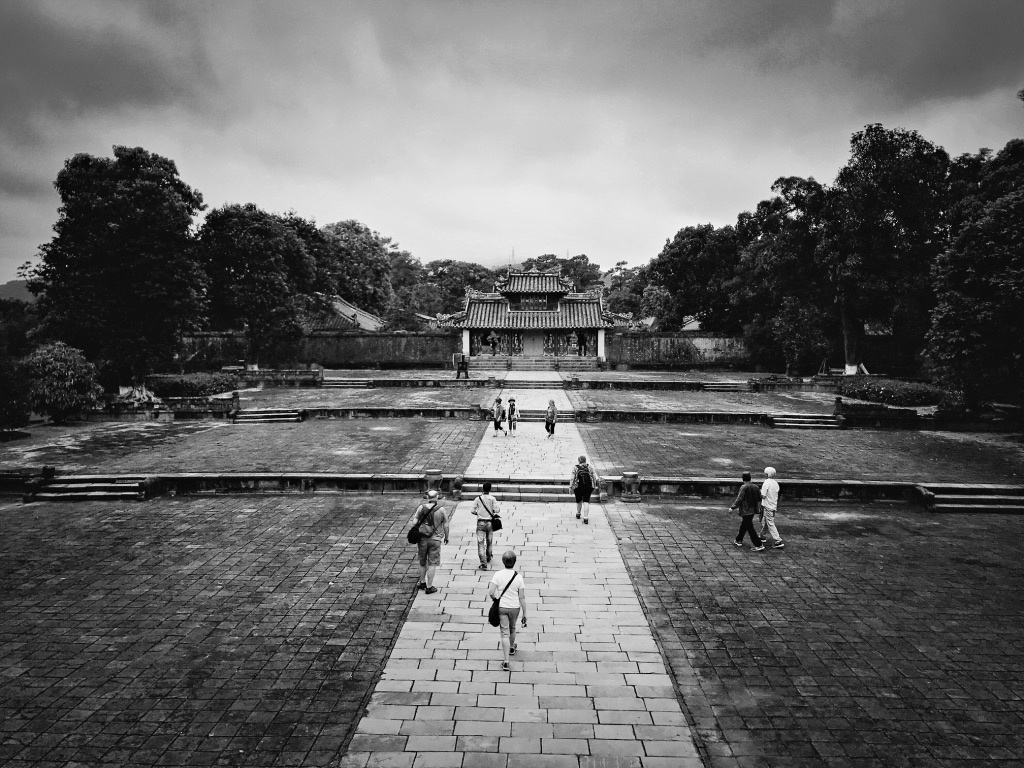
 ...or walk for miles and feel like pieces on a giant chessboard!
...or walk for miles and feel like pieces on a giant chessboard!
Hoi An, however, is everything Hue is not. It is a beautifully preserved beach town that has consciously started up from the bedrock of an old trading village (Fai Fo). It has a wonderful beach, some chic hotels, a vibrant night market, lots of touristy activities, boutiques, dives, great restaurants (Ancient Faifo is one of the very best), outstanding cafes and visitors from almost every corner of of at least 3 continents. And all this within a walkable 4 square kilometres (except maybe the beach for which you would need to cycle some 2 kms)!
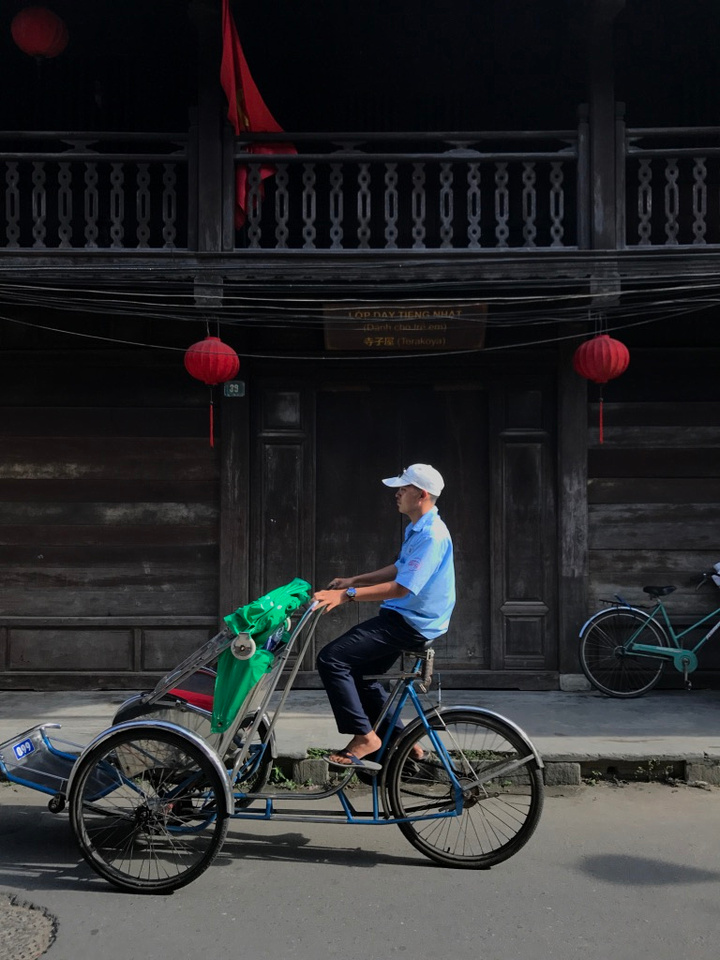

The ubiquitous rickshaw will take you from anywhere to anywhere else in less than 20 minutes
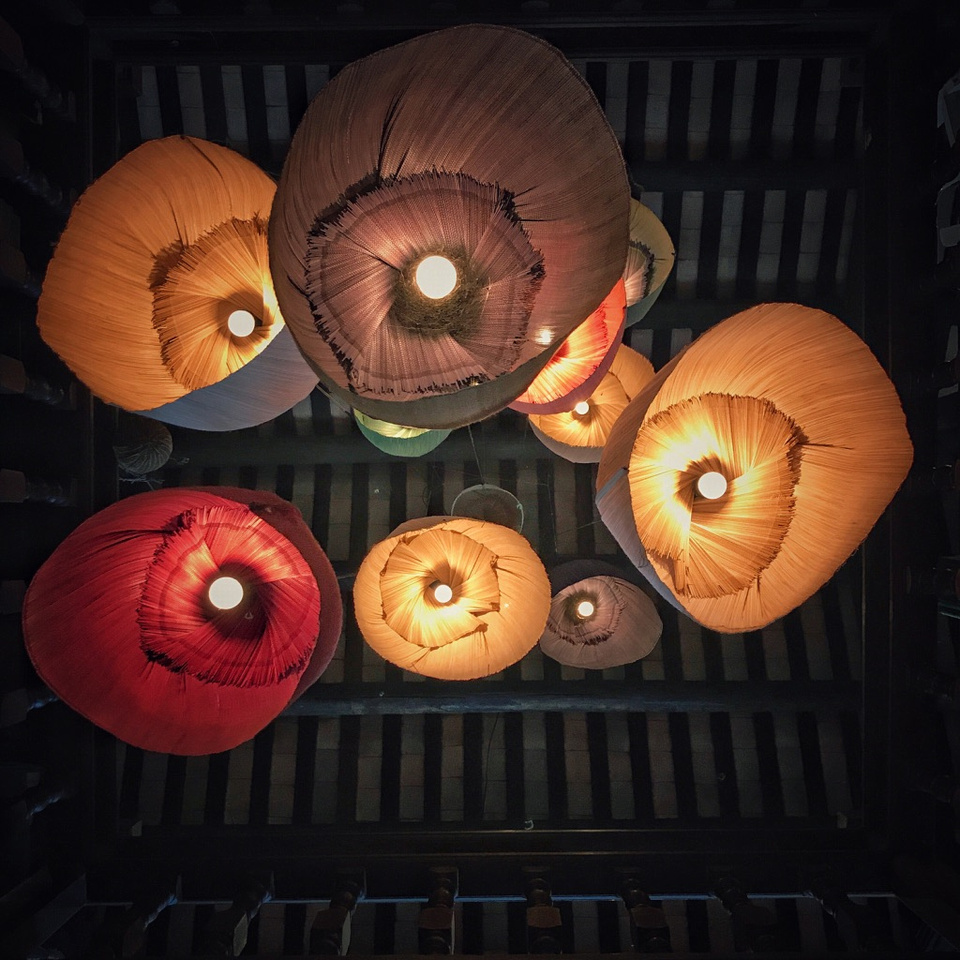

Lanterns hanging from the rafters
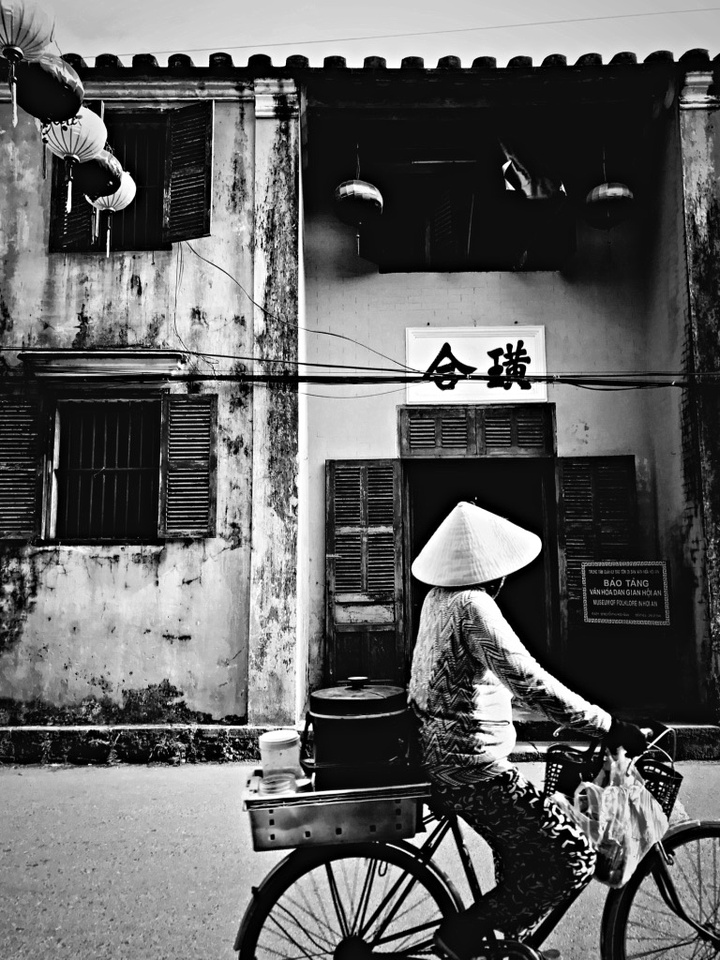

Even the locals know how to play to the popular imagination
If I were to go back to Hoi An, it would be for the beach, the restaurants and the cafes. I'd probably give the boat ride (except during the monthly lantern festival), the lantern making and the night market a wide berth!
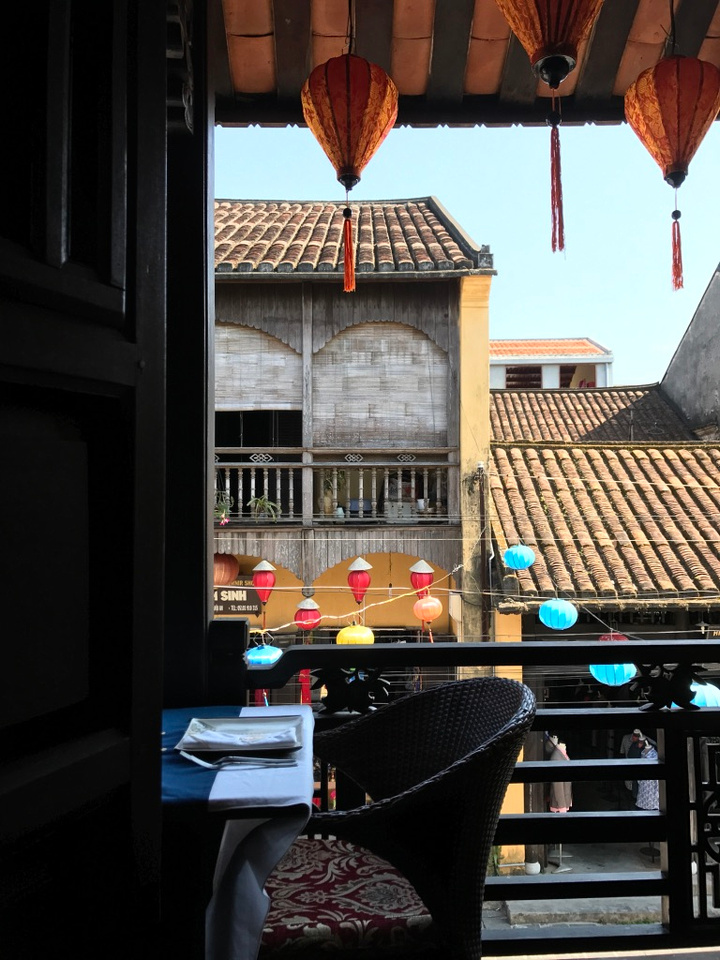

The balcony of Ancient Faifo: the scallion pancakes, mango and lotus salad, and the crispy rolls are to die for
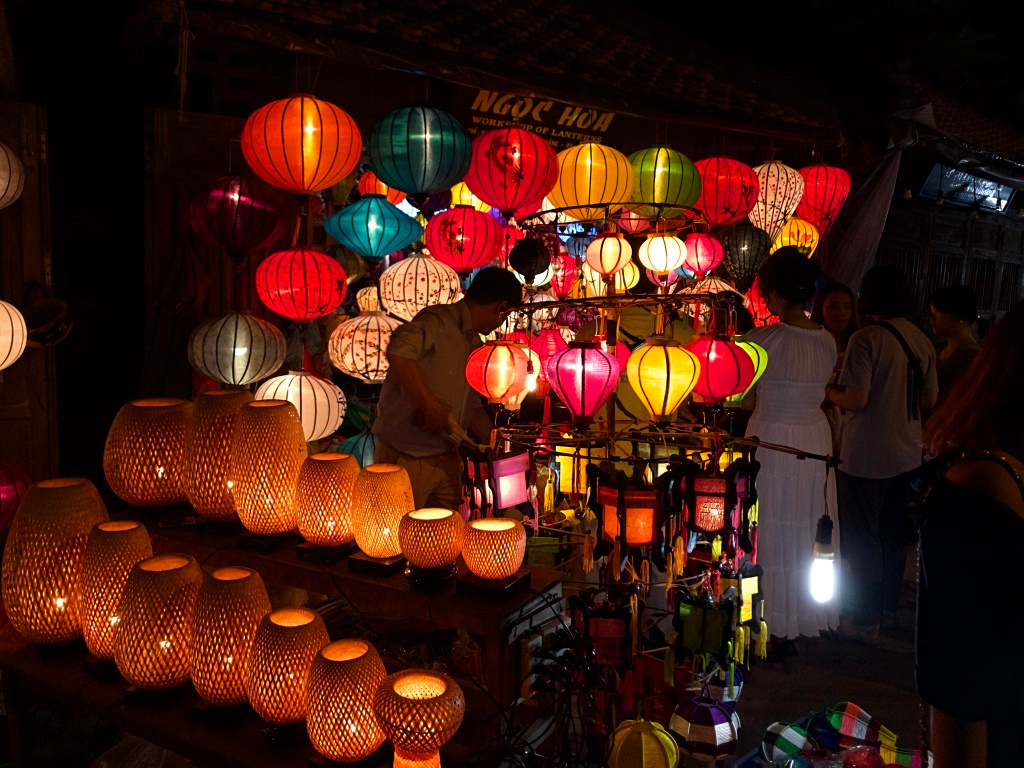
 Even at the night market, the lantern shops are a star attraction
Even at the night market, the lantern shops are a star attraction
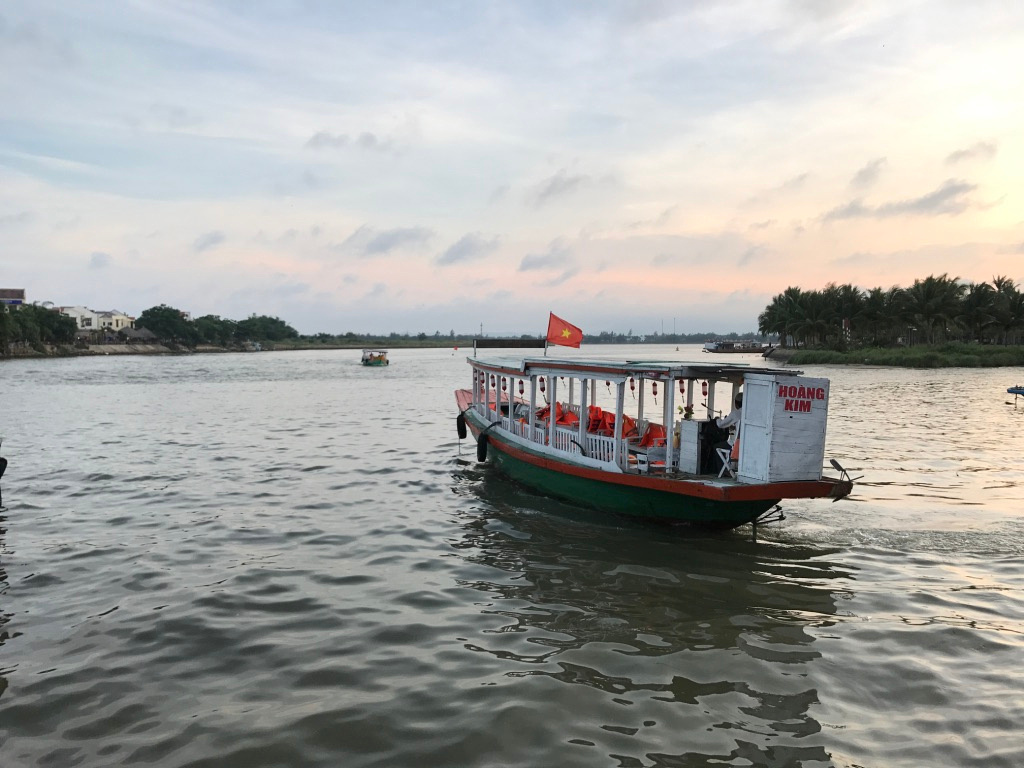
 Sunset on Thu Bon river: the estuary here was a major mediaeval port
Sunset on Thu Bon river: the estuary here was a major mediaeval port
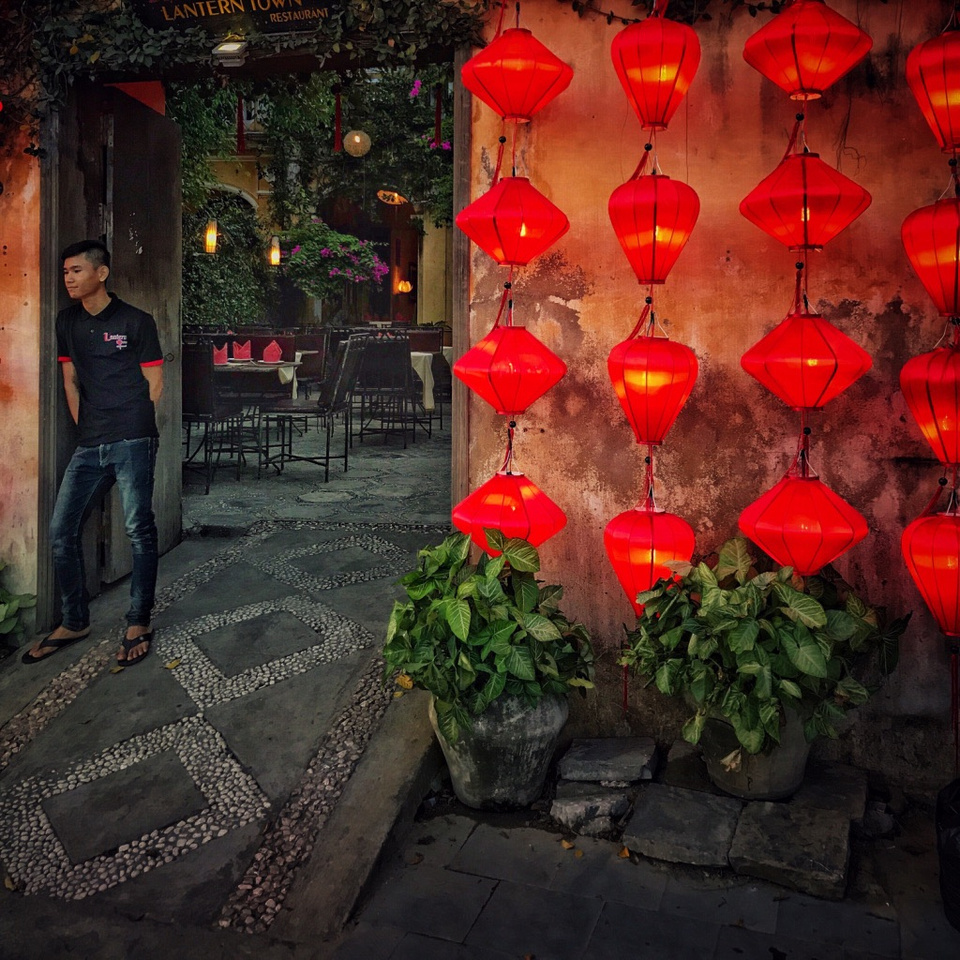
 Another ode to the local craft: during the beginning of the lunar month, the power is shut off and the central courtyard is lit by lanterns only
Another ode to the local craft: during the beginning of the lunar month, the power is shut off and the central courtyard is lit by lanterns only
A note on the pictures: Once again, all these images were snapped by the iPhone 7 Plus. I am beginning to get more and more impressed by the capabilities of this humble phone camera. Even as the light begins to fade, the camera performs well, especially if supported by a tripod. Apps like Cortex Cam allow handheld shots that are absolutely amazing! Except if you need to capture very fast moving objects or if you need longer reach, the iPhone may be all you need for almost any type of vacation.